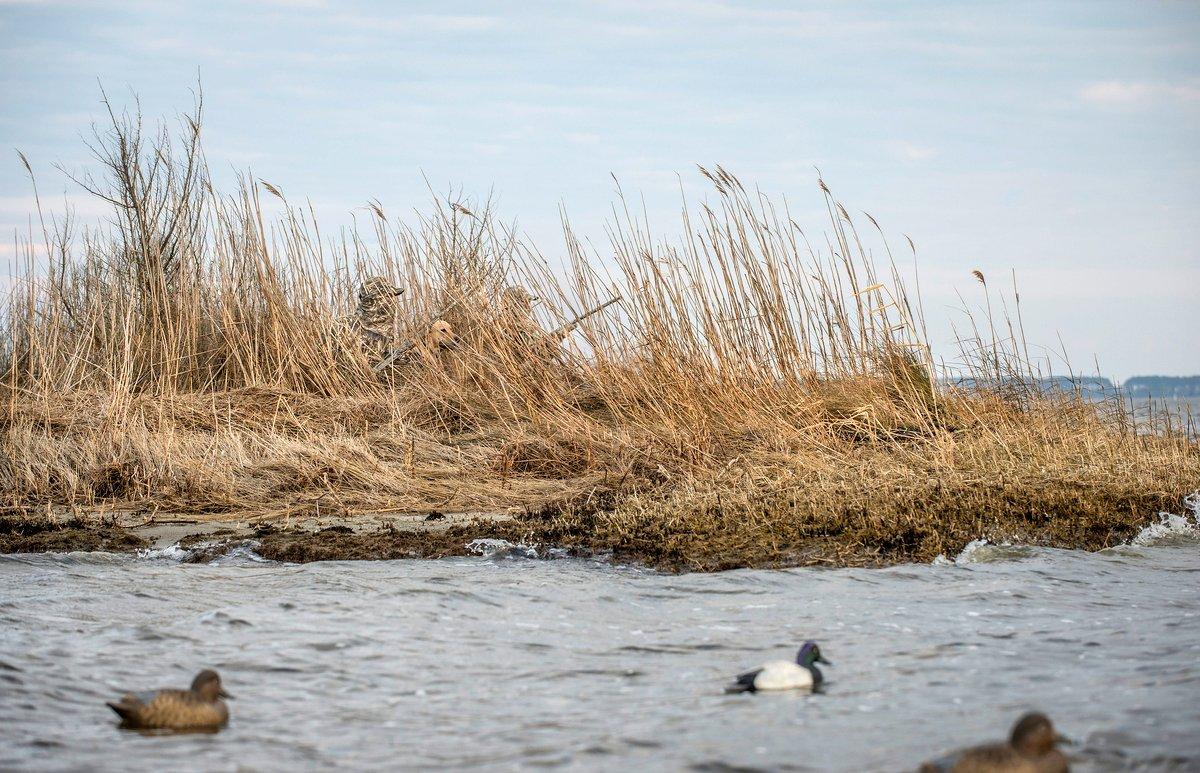From shore-shy buffleheads to rafted bluebills, diver hunting isn't always easy
Diehard big-water hunters know that diver hunting can be just as rewarding — and frustrating — as chasing greenheads and honkers. Consider these birds, which will probably visit a lake or river near you this fall.
1. Offshore Bluebills
Every diver guy has seen this: Distant bluebills suddenly gain altitude, bank hard toward your spread, speed headlong to the rig ... and then splash down 100-plus yards away. Before long, a giant raft of black-and-white ducks bobs in open water, sucking in every other diver that passes by. Meanwhile, you're stuck on shore or an island, watching the show and praying a flock or two passes within range.
Unless you own a layout boat or other open-water gear, you can't do much about this phenomenon. Bluebills are simply open-water ducks. The only real solution is to hunt hard when the wind howls or weather brings in fresh flocks.
2. Refuge Canvasbacks
Hunters familiar with the upper Mississippi River know that canvasbacks often act much like scaup, pouring out of huge refuges at dawn in seemingly endless waves and then massing in giant rafts near wild celery beds, just out of reach of hunters. It's an incredible spectacle that will drive you nuts.
Again, you'll find no real solution. Time your hunts for ducky weather, and beg your local meteorologist for north winds. Otherwise, enjoy the show.
3. In-Between Buffies
Buffleheads have been called the 4-inch bluegills of the waterfowl world, often providing frenzied gunning when other ducks prove scarce. Yet even these reliable little birds can make you pull out your hair when they find safe zones.
For years, I've watched buffleheads in heavily hunted areas learn to avoid shoreline blinds while also not straying too far into open water, where layout hunters await. At first, I thought this was just coincidence, but I've seen it too often to ignore. Those easy buffleheads adapted to avoid hunting pressure, splitting the difference between danger on land and in the chop.
And trust me: When surf doves dodge your spread, diver hunting is tough.
4. Incessant Redheads
It's tough to resent redheads, as the big, colorful dive-bombing birds provide thrilling hunts. In most flyways, however, you can only shoot two redheads per day, and if the flight is in, you'll typically have many more visit your spread after you're filled up. After the umpteenth flock buzzes your blocks, you'll pray for other species.
I saw this happen in October 2019, during my annual prairie hunt. Every slough held redheads. In fact, flooded beans and corn held redheads. Friends and I joked that if the North American redhead population were 700,000, about 699,000 of those birds would be in northeastern South Dakota before Halloween. We weren't really complaining. Still, I wasn't too disappointed when we didn't see many redheads at home during November.
5. Mergies
As the sun illuminates the water's surface and your decoys bob in the waves, a flock of divers buzzes past and then finishes perfectly. You rise and fire, dumping two birds right in the kill hole. And then your buddy laughs.
Nice sawbills, he says. Fooled again.
Don't ask me how anyone can confuse a merganser — even a small hooded merganser — with other ducks, but it happens. Maybe the sun was in your eyes. Perhaps you were excited. Whatever the case, don't feel too bad. Mergansers are cool birds, and they're not bad when turned into sausage or jerky. You can always gift them to the buddy who laughed at you, too.
Click here for more Realtree waterfowl hunting content. And check us out on Facebook.








